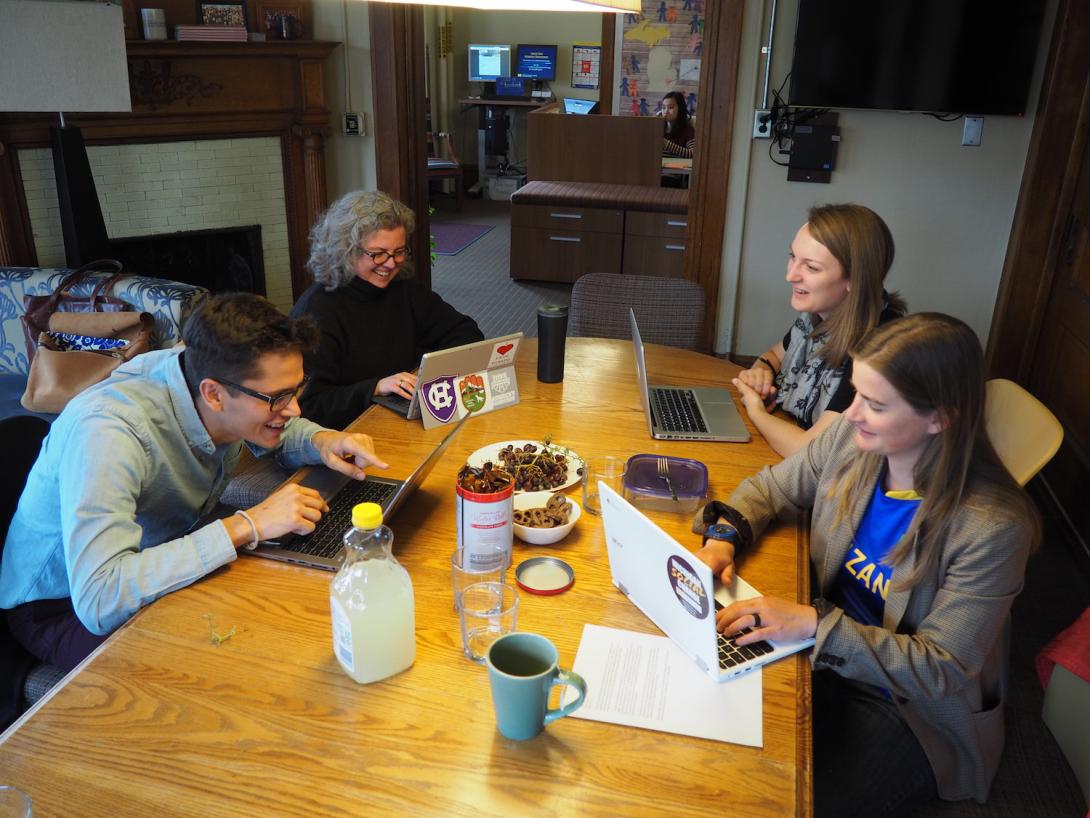In 2015, the Ginsberg Center refined its focus on its mission and core work, and conducted broad outreach to better understand current and emerging needs of social sector community partners. One message to emerge loud and clear was that the organizations needed help gathering, organizing, and analyzing data, and in using data to evaluate efficacy. At the same time, graduate students were asking to do more community-facing projects. That
confluence was the genesis of the Community Technical Assistance Collaborative (CTAC).
“Using data to understand and improve the quality and sustainability of services, CTAC provides students from multiple disciplines with real world opportunities to build their skills for future employment and practice,” notes Mary Jo Callan, Ginsberg Center Director. “Part of CTAC’s innovation is in providing multiple avenues for students to learn from expert faculty by engaging through courses, internships, co-curricular service, and paid work study roles. Creating these guided pathways to learning while benefiting community partners makes this initiative especially exciting.”
“With CTAC, this is all about partnering with the community. We’re learning as much from our community partners as they do from us. There’s synergy.”
—Sue Ann Savas, Assistant Professor of Social Work & CTAC Co-Founder
According to Lauren Beriont, CTAC Coordinator and a graduate student in the School of Social Work, CTAC is where data capacity meets social justice. “A big part of CTAC student training is about developing authentic relationships with the community. For me, data and evaluation is social justice because it allows us to take this culture of learning and apply a lens of justice and equity to it to make sure that what you are doing is working for all people.
It allows us to see opportunities for community organizations to accomplish their missions more effectively, support the staff more effectively, and serve the community more effectively. ”One of CTAC’s key student partnerships is with Statistics in the Community at Michigan (STATCOM), a student organization focused on applying statistics-related skills in service to community change. The group brings together primarily graduate students from the Departments of Biostatistics, Statistics, and the Program for Survey Methodology. “They bring statistical analysis expertise,” says Beriont.
“We don’t have the capacity to do the scope and scale of work that CTAC has made possible to get this work done. It’s a wonderful community resource.”
—Barb Fuller, Vice President, Michigan Broadband Cooperative
A prime example of a successful CTAC community partnership is the initiative’s work with the Michigan Broadband Cooperative (MBC), an organization devoted to closing the digital divide in Washtenaw County and beyond. According to MBC Vice President Barb Fuller, the organization wanted to better understand how people in rural areas of Michigan feel about their lack of access to high speed internet: “Internet companies say it doesn’t make financial sense to extend their services into those areas and utility companies have worked to make it illegal for third parties to step in and make high speed internet a reality for those residents. This has real and negative impacts for economic development and educational opportunities in rural communities.”
“CTAC opened many doors for me that I otherwise would not have gotten in my graduate program. I gained competitive skills in project management, program evaluation, and leadership that I am able to take with me as I enter the workforce.”
—Miranda Kharsa, CTAC student
CTAC designed a study to gauge residents’ attitudes and will evaluate the data once gathered. Fuller says CTAC’s involvement has been invaluable. “We’re just a group of volunteers. We don’t have the capacity to do the scope and scale of work that CTAC has made possible to get this work done,” Fuller says. “It’s a wonderful community resource.” CTAC, of course, also benefits the students involved. “It’s very hard to come out of grad school, then put a resume together and try to get a job doing this work,” says Sue Ann Savas, Clinical Assistant Professor of Social Work and one of CTAC’s founders. “You really need to have a few projects under your belt. CTAC gives students an opportunity to practice and to lead under the guidance of faculty who do this work.”
“This is complex, sometimes murky work, but that’s where the learning comes in,” Savas acknowledges. “For me, the work in the community is where the rubber hits the road. With CTAC, this is all about partnering with the community. We’re not serving them, we’re learning as much from the community partners as they do from us. That’s very important. There’s synergy.”

